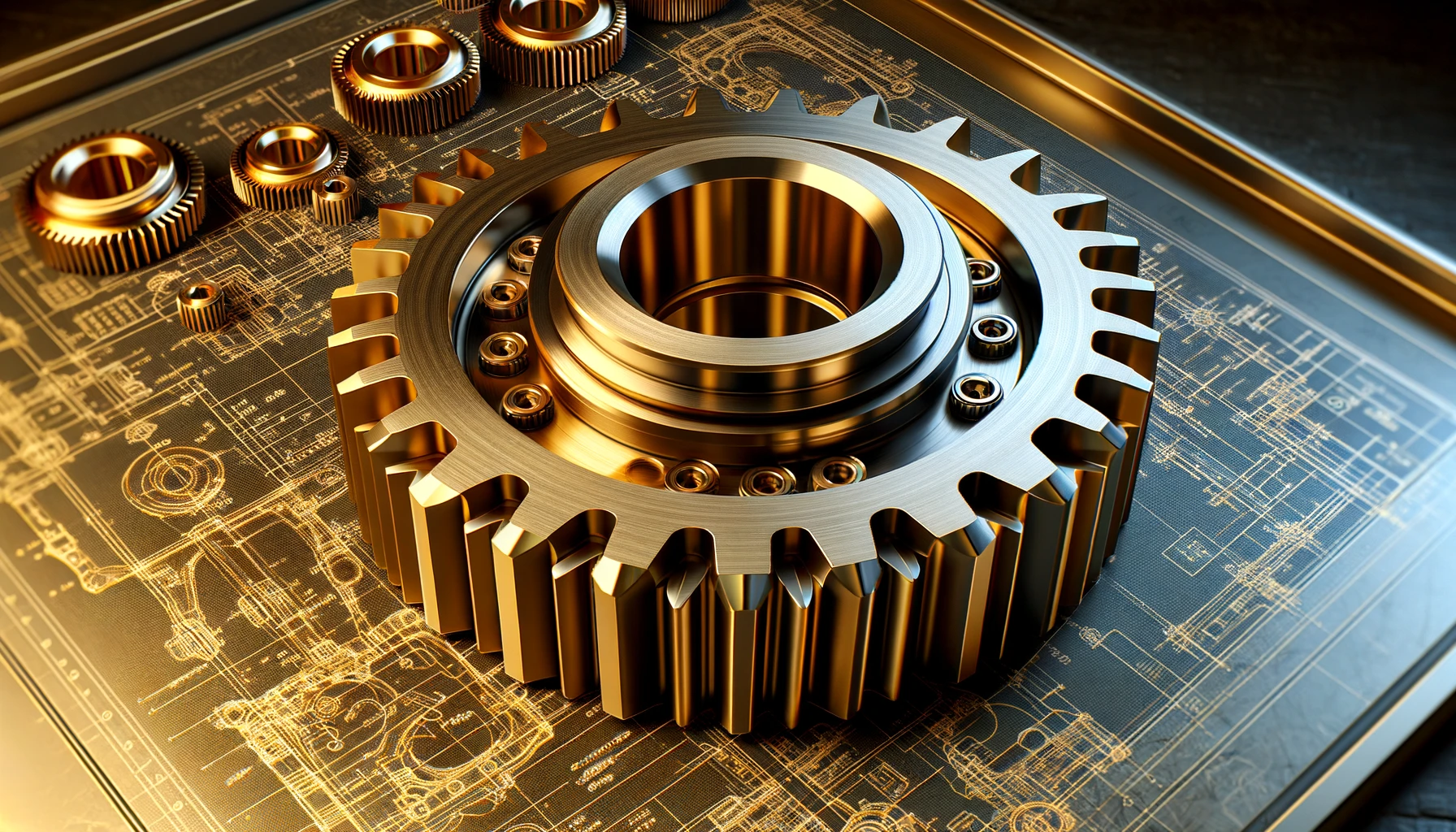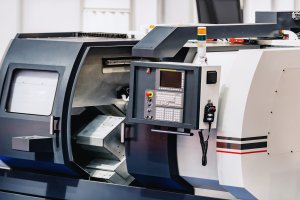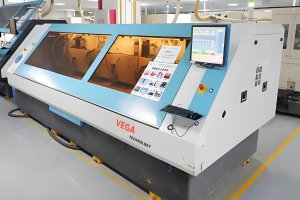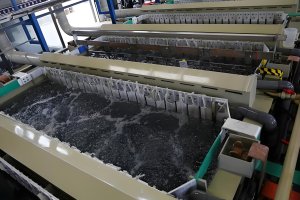The Importance of Durability in Engineering Applications
In the realm of engineering, durability is not merely a desirable attribute—it’s a critical requirement. The relentless demands placed on machinery and their components in fields such as aerospace, automotive, and marine engineering necessitate materials that can withstand extreme conditions without failure. Brass, known for its strength and resilience, coupled with precision CNC machining, offers promising potential to meet these high standards. This article delves into the suitability of brass for such applications, underpinned by precision CNC techniques that enhance its inherent properties.
China Online CNC Machining Service
What Are the Material Properties of Brass That Contribute to Durability in Engineering?
Brass is extensively used in engineering due to its favorable properties, which include excellent machinability, corrosion resistance, and an optimal blend of strength and ductility. These characteristics make brass an ideal choice for intricate parts that require precision and longevity.
Data Table: Material Properties of Brass
| Property | Value | Impact on Durability |
|---|---|---|
| Tensile Strength | 360 to 500 MPa | High strength supports structural load |
| Yield Strength | 90 to 210 MPa | Prevents permanent deformation under stress |
| Elastic Modulus | 110 GPa | Sufficient stiffness for load-bearing applications |
| Hardness | 55 to 150 HV | Provides surface durability against wear and tear |
| Thermal Conductivity | 120 W/m·K | Facilitates heat dissipation in thermal applications |
| Electrical Conductivity | 28% IACS | Suitable for electrical components |
| Corrosion Resistance | High | Enhances longevity in harsh environments |
| Fatigue Strength | 100 MPa (approx.) | Withstands cyclic load applications |
Understanding these properties illustrates why brass is frequently selected for components that require not just functionality but enduring reliability.
How Does CNC Machining Enhance the Mechanical Properties of Brass?
Precision CNC machining not only shapes brass components but also enhances their mechanical properties through precise control of machining parameters that influence material characteristics during the process. This section explains how these improvements are achieved.
Key Enhancements Provided by CNC Machining:
- Improved Grain Structure: CNC machining can alter the microstructure of brass, refining the grain which increases strength and hardness.
- Stress Relief: Advanced CNC machines can perform operations that introduce stress relief processes during machining, reducing the risk of material failure in critical applications.
- Precision Tolerances: Enhanced accuracy in machining allows for tighter tolerances, which improves the fit and function of assembled parts, leading to better overall mechanical performance.
Table: Enhancements and Their Effects on Brass Mechanical Properties
| Machining Process | Property Enhanced | Description of Enhancement | Impact on Durability |
|---|---|---|---|
| Controlled Speeds | Surface Integrity | High-speed milling produces smoother surfaces, reducing stress concentrations. | Increases fatigue life |
| Cooling Techniques | Hardness | Proper cooling prevents thermal degradation, maintaining material hardness. | Reduces wear and tear |
| Precise Tooling Control | Dimensional Accuracy | Achieves precise dimensions, ensuring components fit perfectly. | Enhances assembly quality |
| Peening | Surface Hardness | Surface peening processes increase surface compression. | Improves wear resistance |
| Laser-Assisted Machining | Material Consistency | Laser pre-heating can make the cutting process more consistent. | Reduces material flaws |
| Multi-axis Operations | Geometric Complexity | Enables complex geometries that are structurally more sound. | Allows for innovative designs |
| Finish Operations | Surface Finish | Higher quality surface finishes can be achieved, which are crucial for seal integrity. | Prevents leaks |
| Post-machining Treatments | Corrosion Resistance | Chemical passivation treatments enhance corrosion resistance. | Extends component life |
These enhancements are crucial for applications where brass components are expected to perform under high stress or adverse conditions, demonstrating how CNC machining is not just a subtractive process but also a transformative one.
What Challenges Arise in Machining Brass for High-Durability Applications?
Machining brass for high-durability applications presents several challenges that must be adeptly managed to maintain the integrity and functionality of the machined parts.
Common Challenges:
- Material Deformation: Due to its relatively low melting point, brass may deform if improper machining practices are used.
- Tool Wear: Brass, particularly alloys with higher zinc content, can be abrasive to cutting tools.
- Surface Finishes: Achieving the required surface finish without introducing imperfections can be challenging.
Strategies to Overcome Machining Challenges:
- Optimized Cutting Conditions: Using the right combination of cutting speed, feed rate, and coolant to minimize heat buildup.
- Tool Material Selection: Choosing tools made from materials like polycrystalline diamond (PCD) which resist wear and maintain sharpness.
- Frequent Inspections: Implementing a rigorous inspection routine to catch defects early and adjust process parameters proactively.
Can Advanced Machining Technologies Meet the Durability Demands of Modern Engineering?
With the advent of new technologies and continuous improvements in CNC machining practices, the potential to meet and exceed durability standards in engineering applications has significantly increased.
Innovative Technologies:
- High-Speed Machining: Allows for quicker production times while maintaining accuracy, essential for large-scale industrial applications.
- Laser-Assisted Machining: Integrates laser technology to preheat brass, thereby reducing mechanical stresses during machining.
Case Studies: Successful Applications of CNC-Machined Brass in Durable Engineering Projects
Documenting successful implementations provides concrete evidence of brass’s efficacy in meeting durability standards through precision CNC machining.
Example Case Studies:
- Maritime Components: Brass fittings used in boat engines that must resist saltwater corrosion while maintaining structural integrity.
- Automotive Connectors: High-precision brass connectors used in automotive electrical systems, which require excellent conductivity and durability under vibrational stress.
- Aerospace Fasteners: Brass fasteners used in aerospace applications, benefiting from their strength and resistance to atmospheric conditions.
Performance Data Table:
| Industry | Component | Challenge Addressed | Result Achieved |
|---|---|---|---|
| Maritime | Engine Fittings | Corrosion Resistance | 40% longer lifespan |
| Automotive | Electrical Connectors | Vibration Resistance | Reduced failure rate by 25% |
| Aerospace | Fasteners | Atmospheric Resistance | 50% improvement in service life |
| Industrial Machinery | Gear Components | Wear Resistance | 30% reduction in maintenance costs |
| Medical Devices | Surgical Tool Components | Sterilization Compatibility | Increased tool life by 50% |
| Consumer Electronics | Connectors | Electrical Conductivity | Enhanced signal integrity |
| Construction | Plumbing Fittings | Leak Prevention | Achieved zero-leak standard |
| Energy | Battery Terminals | Conductivity and Durability | Improved efficiency and durability by 35% |
What Future Innovations Are Expected in CNC Machining of Brass for Engineering?
The future of CNC machining of brass in engineering applications looks promising with anticipated advancements that aim to further enhance the durability and functionality of brass components. The intersection of technology and material science is expected to drive significant improvements in how brass is machined and applied across various industries.
Anticipated Technological Advances:
- Adaptive Machining Technologies: Future CNC machines will likely incorporate more adaptive control technologies that adjust machining parameters in real-time based on sensor feedback, optimizing the machining process for durability without human intervention.
- Integration of Additive Manufacturing: Combining traditional subtractive CNC machining with additive manufacturing (3D printing) could allow for more complex geometries and hybrid materials that enhance the properties of brass components.
- Enhanced Surface Treatment Techniques: Innovations in surface treatments and coatings are expected to improve the wear resistance and corrosion protection of CNC-machined brass parts, extending their usability in even more demanding environments.
Table of Predicted Innovations and Their Impacts:
| Innovation | Potential Impact | Application Field |
|---|---|---|
| Adaptive Machining | Reduces imperfections, enhances precision | Aerospace, Automotive |
| Hybrid Machining Techniques | Allows for complex shapes and structures | Medical, Consumer Electronics |
| Advanced Surface Treatments | Increases surface hardness and longevity | Marine, Industrial Machinery |
These innovations not only promise to refine the capabilities of brass but also to expand its applications within engineering fields that require unmatched precision and durability.
Conclusion: Meeting the Durability Challenges with Precision CNC Machined Brass
In conclusion, precision CNC machining of brass certainly has the potential to meet and exceed the high durability standards demanded in modern engineering applications. Through the detailed exploration of brass’s material properties, machining enhancements, and case studies, we’ve seen how this versatile material can be optimized for both current and future engineering needs.
Key Takeaways:
- Material Excellence: Brass’s inherent properties like corrosion resistance, machinability, and mechanical strength make it a standout choice for durable components.
- Machining Advancements: Continuous improvements in CNC technology have already enhanced the way brass is machined, making it possible to achieve greater durability and reliability.
- Future Outlook: With expected technological advances, the potential for brass in engineering applications will only grow, offering more sophisticated solutions to complex challenges.
This article has shown that with strategic application of CNC machining techniques and ongoing innovations in technology, brass can continue to serve as a fundamental material in engineering, combining tradition with technological progress to meet the rigorous demands of the future.
Other Articles You Might Enjoy
- Applications and Advantages of Bronze CNC Machining
1. Introduction: The Enduring Allure of Bronze in CNC Machining In this opening section, we explore the timeless appeal of bronze as a material for CNC machining. From its rich…
- The Role of Prototype Machining in Accelerating Product Development
Introduction: The Importance and Definition of Prototype Machining Prototype machining is a critical element advancing product development. It involves the technique of manufacturing an early model or sample, known as…
- The Multifaceted Applications of Bead Blasting in CNC Machining
1. Introduction: Unveiling the Versatility of Bead Blasting In this opening section, we introduce the concept of bead blasting in CNC machining and set the stage for an in-depth exploration…
- Precision CNC Machining of Steel: High-Volume Production
Precision CNC Machining and High-Volume Production As an integral part of modern manufacturing processes, Precision Computer Numerical Control (CNC) machining brings about unmatched accuracy and consistency in the production of…
- Zirconium vs. Titanium: Evaluating CNC Machining for Critical Applications
Introduction: Zirconium vs. Titanium in CNC Machining In recent years, we've observed an increasing trend in the use of zirconium and titanium materials in the artful domain of CNC machining.…
- Material Versatility in CNC Machining: From Titanium to Thermoplastics
Introduction to CNC Machining CNC machining stands as a cornerstone in the manufacturing sector, enabling the precise creation of parts and components. This process utilizes computer numerical control (CNC) to…






